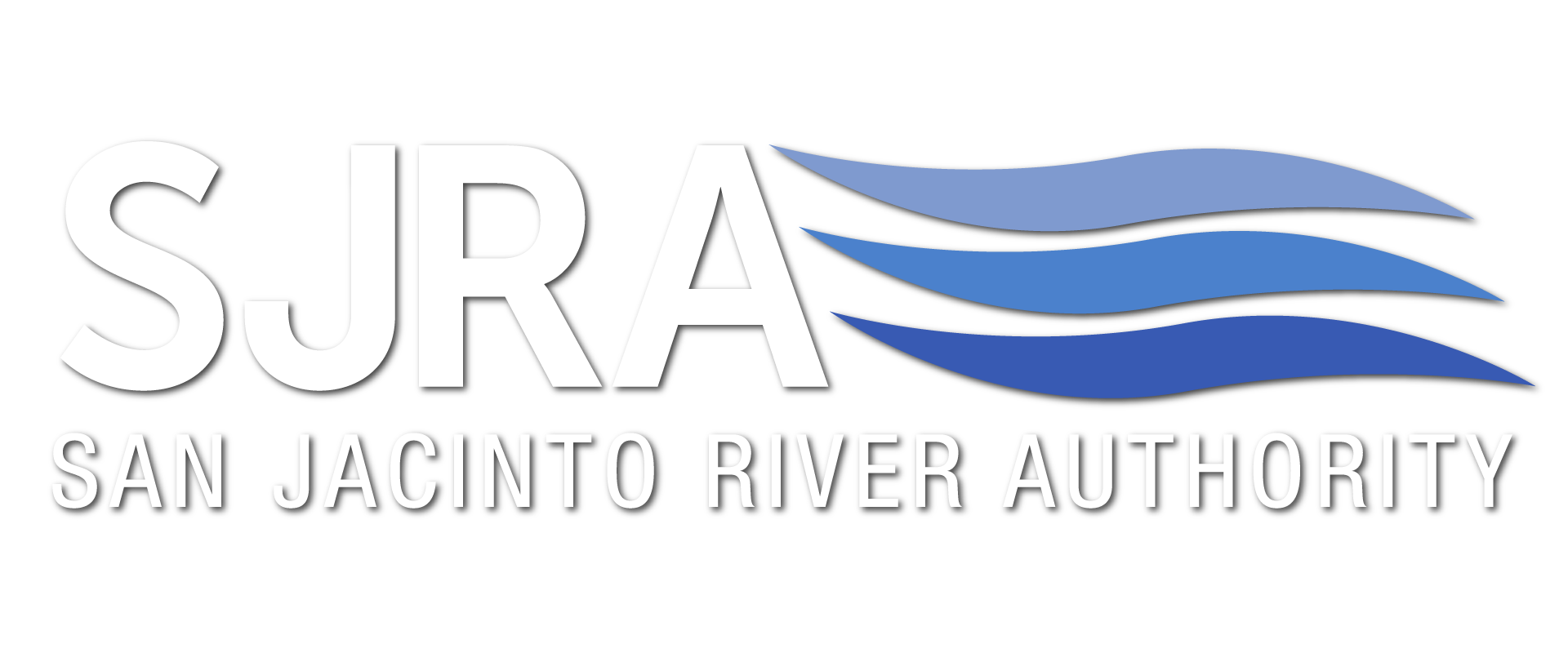Written by: Jack Newton
Lake Conroe was constructed as part of a state-wide initiative to increase Texas’s water storages after recording breaking droughts in the 1950’s. Since its completion in 1973, the lake has maintained pristine water quality; it consistently exceeds federal standards for water quality as set by the Clean Water Act. However, as the watershed becomes more urbanized, the lake becomes increasingly at risk of becoming polluted. Urbanization elevates the probability of water contamination via runoff from stormwater, residential/commercial activities, sewage, and waste. To safeguard Lake Conroe’s water quality, the San Jacinto River Authority (SJRA) has implemented a series of proactive measures outlined in our Watershed Protection Plan (WPP) which is updated along with the developing watershed. The WPP’s initiatives target varied aspects of the lake, including diligent water quality monitoring, public education, native aquatic plantings, invasive species control, stormwater mitigation, and regulating On-Site Sewage Facilities (OSSF).
The SJRA, as designated by the TCEQ, regulates all OSSF systems within 2,075 feet of Lake Conroe’s shoreline. The SJRA not only abides by TCEQ’s standards for OSSF systems but imposes stricter standards than required by the State. SJRA maintains a comprehensive database of every facility and ensure each system is properly installed and consistently maintained. The importance of strictly regulating these systems cannot be overstated. An unpermitted, improperly designed, inadequately installed, and unmaintained OSSF is far more likely to cause bacteriological, viral, and chemical contamination into the lake when compared to systems that are properly designed and maintained to the standards of the SJRA.
Consistent and accurate water quality data is collected by the SJRA monthly at ten different locations to determine lake trends and guide decision making on lake matters. In 1991, the Clean Rivers Program (CRP) was established by the TCEQ to oversee Texas’s water health. The SJRA is responsible for managing this program for Lake Conroe. The data collected (pH, turbidity, conductivity, temperature, and oxygen) informs the SJRA on lake health and helps build a long-term water quality profile for the lake. Furthermore, samples are routinely sent off to labs to test for bacteria and other chemical contaminants.
As development around Lake Conroe intensifies, SJRA works with developers when they wish to use the lake as a detention source to mitigate pollution from stormwater runoff into the lake. We review drainage plans for new developments and require Stormwater Best Management Practices (BMPs) to be implemented in an attempt to control their environmental impact. These BMPs include vegetated swales, silt fences, trash collectors, and oil catchment systems. Our public outreach SwIM (Stormwater Inlet Marking) program is a way to make people more conscious of what is put down the storm drains, and the subsequent impact to the lake. Signage has been posted on stormwater drains that clearly indicate that they drain into the lake. We also issue social media posts informing of negative impacts pet waste, improper chemical disposal, fertilizer runoff, and various other pollutants into the lake.
Lastly, the SJRA protects Lake Conroe’s ecosystem by combating invasive species. The infamously invasive Zebra Mussel that has overrun and destroyed many reservoir ecosystems in Texas is actively monitored by SJRA and Texas Parks and Wildlife (TPWD) staff, thankfully with no detections. We have placed varied substrates favored by the Zebra Mussels in areas of high boat activity that are routinely examined for the presence of Zebra Mussels. Furthermore, SJRA staff conducts microbial tests for Zebra Mussels. The Zebra Mussel’s microscopic early life stage is tested for by pulling a planktonic net through the lake which is then studied under a microscope for their presence. Invasive plant species, such as Hydrilla, Water Hyacinth, and Giant Salvinia threaten to overrun native species that the local ecosystem depends on. We have taken an integrated approach to combat the spread of these species that involves biological and herbicide control. SJRA’s licensed applicators conduct herbicide treatments by spraying EPA approved herbicides on areas of the lake that are highly concentrated with invasive plants. Biological control is practiced by the SJRA via the reinforcement of native plants and the introduction of predators of particular plant species. Every year, TPWD Inland Fisheries Department presents the SJRA with grass carp stocking recommendations to combat invasive plants. After reviewing the plan with stakeholders, the SJRA may stock the lake with sterilized grass carp to control Hydrilla. Native aquatic plants are grown in an aquatic nursery here at the Dam Site and are then strategically planted around the lake shoreline where it is void of native vegetation. Once established, it is our hope that the natives begin to spread and act as a barrier for the invasives spreading their territory and provide support for the lake’s ecosystem.
SJRA’s commitment to environmental stewardship and protecting the watershed is exemplified in the diligent efforts outlined in the WPP. The SJRA works diligently to help ensure that Lake Conroe remains a clean source of public water and a healthy environment for aquatic life. With these efforts, the SJRA will continue to protect Lake Conroe for generations to come.

